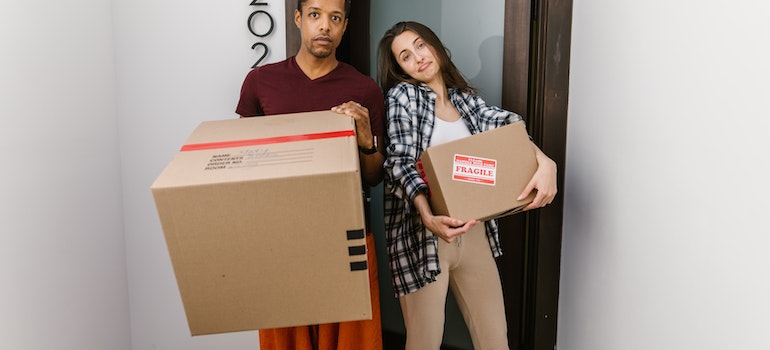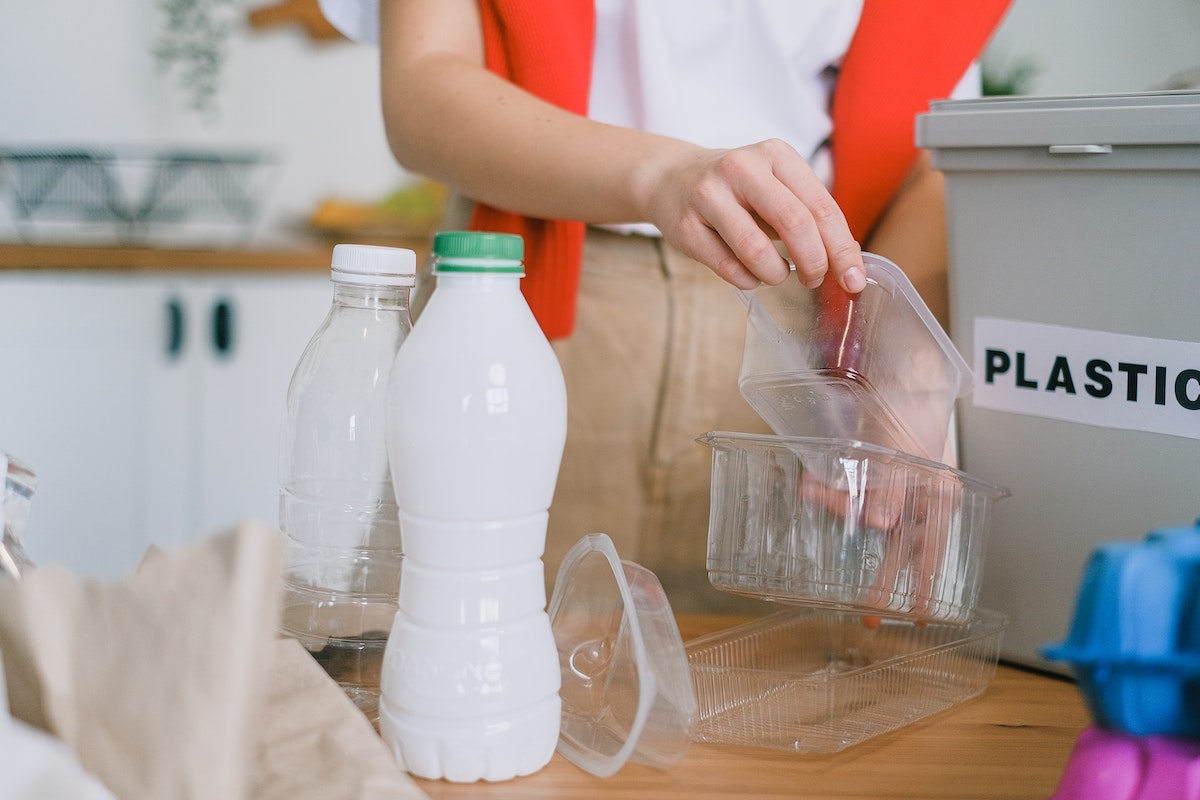Embarking on a new journey in a different location is an exciting chapter of life, but amidst the hustle of moving, the proper disposal of hazardous materials might be inadvertently overlooked. Safely managing and disposing of these materials is not only crucial for your well-being but also for the environment and the community you’re joining. In this guide, we’ll tell you what are the best ways to dispose of hazardous materials after a move, so you can ensure a seamless transition while prioritizing safety and sustainability.
Safely Disposing of Common Move-Day Items
During the process of moving, a variety of hazardous materials often surface, requiring special attention for their proper disposal. Common items such as household cleaning supplies, unused paints, old batteries, and outdated electronics can pose significant risks to both health and the environment if not handled correctly.

Cleaning agents may contain harmful chemicals that could potentially contaminate water sources and harm aquatic life. Paints often contain volatile organic compounds (VOCs), which can contribute to air pollution and pose respiratory risks upon inhalation.
Navigating Local Regulations for Hazardous Waste Disposal
Mastering the intricacies of local regulations pertaining to hazardous waste is paramount. These regulations exhibit significant variance across states and municipalities, necessitating a thorough grasp of the rules that apply to your specific location. To effectively navigate this landscape, initiate your research by contacting your local waste management authorities or visiting their official websites. They often provide comprehensive guidelines detailing how to dispose of hazardous materials safely.
Efficient Hazardous Material Organization
Efficiently organizing hazardous materials for disposal is a pivotal step toward a smooth and safe transition. Begin by categorizing materials into distinct groups based on their types, such as chemicals, electronics, and paints. This categorization not only streamlines the disposal process but also minimizes the potential for cross-contamination. Furthermore, it’s crucial to maintain materials within their original containers whenever possible. These containers are designed to hold securely and transport hazardous substances, reducing the risk of leaks or spills during handling.
Proper labeling
Equally important is the practice of proper labeling. Clearly mark each container with a concise description of its contents. This not only aids in easy identification but also ensures that disposal personnel can handle the materials safely and appropriately. Remember that improper labeling can lead to confusion and mishandling, potentially endangering those involved and harming the environment.
Disposal process
When it comes to the actual disposal process, it’s best to rely on certified hazardous waste disposal facilities. These facilities possess the necessary expertise and infrastructure to handle hazardous materials responsibly. Begin by contacting local waste management authorities or searching online directories to find authorized disposal facilities in your area. That way, you can successfully complete your eco-friendly move. Many communities provide designated drop-off locations or scheduled collection events for hazardous waste.
Safely Handling and Transporting Hazardous Materials
While hiring professionals does come with a cost, it’s an investment in both safety and compliance. The expenses associated with professional services vary depending on factors like the type and volume of hazardous materials, the complexity of disposal, and local market rates. However, the peace of mind gained from knowing that hazardous materials are being handled appropriately often outweighs the financial considerations.

Safely transporting hazardous materials to disposal sites is paramount for both your safety and the environment’s well-being. Start by securely sealing containers to prevent leaks or spills during transit. Utilize materials like absorbent pads or secondary containment to further safeguard against potential accidents. When transporting hazardous items, consider using a dedicated vehicle or storage container pods to minimize the risk of cross-contamination and ensure proper containment.
Finding the Right Disposal Facilities When You Need to Dispose Hazardous Materials After a Move
Discovering suitable disposal facilities for your hazardous materials is crucial for a responsible move. Begin by reaching out to your local waste management or recycling centers; they often possess valuable information regarding authorized drop-off locations. When contacting these facilities, inquire about their specific policies and procedures for accepting hazardous materials. Some centers might have designated days or hours for accepting these items, so it’s important to be well-informed about their operational details.
Donating and Recycling Hazardous Materials After Your Move
Exploring avenues for donating or recycling hazardous materials is a proactive approach to minimizing waste during your move. Certain organizations specialize in recycling electronics or batteries, aiding in the proper disposal of these potentially harmful items. Prior to donating, ensure that items are in good condition and functional, as many donation centers only accept usable materials. To locate local donation centers or recycling programs, consult online directories provided by environmental agencies or waste management authorities.
Safety During Transport
Avoid overcrowding or stacking containers to prevent damage that could lead to leaks. During transit, drive cautiously, avoiding sudden movements and maintaining a safe distance from other vehicles. If transporting materials that could pose immediate dangers, such as flammable substances, be aware of emergency response protocols and have appropriate safety equipment on hand. If you wish to avoid handling all of this on your own, consider finding a moving company on the Verified Movers platform to handle this move for you.

Dispose Hazardous Materials After a Move 101
Promoting awareness of proper hazardous material disposal is a collective responsibility that yields far-reaching positive effects. Educating family members or housemates about safe practices fosters a culture of responsibility and ensures everyone is well-informed about potential risks.
You can dispose hazardous materials after a move with a few essential steps. Prioritize safety and environmental preservation by categorizing materials, securing containers, and labeling items correctly. Research local regulations to ensure compliance and access relevant guidelines. Remember, responsible disposal is not only crucial for immediate safety but also for the long-term health of our planet.




